- Home
- About
- Courses
- IR/INFO CONFERENCE
- Software
- EXPERT SERVICES
- STANDARDS
- Proposal Templates
- Electrical Systems & Rotating Equipment
- Building Envelopes
- Insulated Roofs
- Photovoltaic Systems
- Pest Detection
- Yachts and Small Craft
- Thermal Imaging of Horses
- Optical Gas Imaging
- Measuring Reflected Temperature
- Measuring Emittance
- Measuring Transmittance
- Distance/Target Size Ratios
- Complete Series
- Resources
- BUSINESS OPPORTUNITIES
- STORE
List of articles contained in the IR/INFO 2020 Proceedings:
Matt Adams
Technical Consultant

Noria Corporation 1328 E. 43rd Court Tulsa, OK 74105
Ph: 918-749-1400
www.noria.com
This email address is being protected from spambots. You need JavaScript enabled to view it.
The Power of Correlating Lubrication, Vibration, and Infrared Analysis Results
Abstract:
While each individual Predictive Maintenance (PdM) technology can function properly alone, like in most group cases, they only truly flourish when working in unison.
Utilizing lubrication, vibration, or infrared as a second and third form of verification can often help identify and resolve equipment reliability issues.
Throughout this session we will investigate several common component failures and how each technology has a role to play in detection.
Attendees will acquire an understanding of several PdM technologies and how they can be used together to help minimize equipment downtime.
Dan Adler
N.A. Sales Director

Semeq, Inc. 7650 US Highway 287, Suite 108 Arlington, TX 76001
Ph: 307-315-1897
http://www.semeq.com/
This email address is being protected from spambots. You need JavaScript enabled to view it.
Using Ultrasound and PDS in Conjunction with Thermographic Inspections of Electrical Systems
Abstract:
Used separately, Condition Based Monitoring tools can provide valuable information for operating machinery and systems; however, each technology has its limitations. Combining multiple complimentary technologies can help overcome the limitations of a single technology and provide more useful information. This presentation will discuss how ultrasonic translators, partial discharge sensors, and IR/Acoustic Port Windows are utilized to perform inspections of medium and high voltage electrical equipment to find faults that would otherwise go undetected allowing troubleshooting of critical assets in a safe and efficient manner.
John (Jack) Allinson, II BSc AMS®
Level III Certified Infrared Thermographer
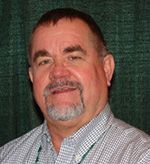
J.N. Allison Associates, Inc. 222 University Blvd. North #2 Jacksonville, FL 32211
Ph: 904-721-2177
www.allinson.com
This email address is being protected from spambots. You need JavaScript enabled to view it.
Infrared Imagers and Marine Inspection Applications
Abstract:
Images collected from proper use of an infrared imager often helps explain a process that is difficult to grasp with numerical measurements alone. This applies to inspections of electrical systems, rotating machinery, and structural components of a marine vessel.
The author is a SAMS Accredited Marine Surveyor, Infraspection Institute Master Thermographer®, co-author of the Standard for Infrared Inspection of Recreational Yachts & Small Craft Constructed of Fiberglass Reinforced Plastic and Composite Maters published in 2011 (aka “The Standard”) and has used infrared thermal imaging in his Marine Surveying business since 2003.
This year’s presentation will focus on a practical application of using an infrared imager attached to a cell phone can be successfully used for marine inspections versus a stand-alone infrared imager.
Tony Holliday
Sales & Marketing
CorDEX Instruments Ltd.
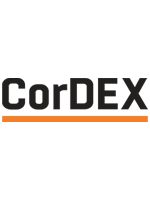
5B Jacksons Yard, Shawfield Lane Malton Y017 6BT United Kingdom
Ph: 877-836-0764
www.cord-ex.com
This email address is being protected from spambots. You need JavaScript enabled to view it.
The Evolution of Electrical Infrared Inspections: From Infrared Windows to Continuous Thermal Monitoring Systems
Abstract:
Since the advent of infrared camera systems, industrial electrical equipment inspections have always been high on the list with respect to the Return on Investment (ROI) justification for the camera purchase. High resistance joints are perfect for thermal cameras to detect and often in locations which are relatively easily accessed. Outdoor substations with overhead incoming and outgoing cables are a prime example of where a brief sweep with a thermal imager can easily identify problem areas. But, what happens when the target for inspection is enclosed within a panel, box or cabinet? Infrared cameras simply cannot “see through” steel panel covers or doors. With the wider adoption of safety standards such as NFPA 70E and CSA Z462, removing covers when the system is live is not possible.
The solution? IR Windows! This simple technology has become commonplace in the past ten years. Simple to install and in many cases “fit and forget”, IR Windows have helped thermographers access and inspect live electrical systems quickly and in comparative safety. But with hundreds, maybe thousands of IR Windows installed in a single facility, the job of electrical infrared inspections can become a role in and of itself, sometimes, for little more than ticking a box.
As technology advances, continuous thermal monitoring systems have begun to emerge. With a range of differing options, these systems can work stand alone or be connected to a plant SCADA/BMS system with varying degrees of automatic alarming and even control philosophies. This paper explores the evolution of IR Windows and compares the benefits of IR Windows against continuous thermal monitoring solutions available today with the pros and cons of each.
James Brady
Level III Certified Infrared Thermographer
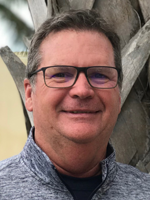
Brady Infrared Inspections 935 Pine Castle Court Stuart, FL 34996
Ph: 772-288-9884
www.bradyinfrared.com
This email address is being protected from spambots. You need JavaScript enabled to view it.
Infrared Inspection of Industrial Mechanical Equipment
Abstract:
Routine infrared surveys to detect abnormal heat patterns in rotating mechanical equipment can provide excellent payback in industrial settings. Unexpected breakdowns of critical equipment are extremely costly and often delay production schedules. Infrared can also bolster the effectiveness of in-house vibration programs by quickly screening equipment that is critical to operations but otherwise may not be monitored.
This presentation highlights an ongoing quarterly inspection of various mechanical systems related to paper mill machinery. We will discuss the initial program design and field-related tasks necessary to set up the inspection program. Also presented will be findings documented from over 3,000 monitored points over a 3 year period.
Cody Jackson
VP of Business Development

JTI Services, LLC 515 South Main Street Winthrop, MN 55396
Ph: 888-373-7812
www.jtiservices.com
This email address is being protected from spambots. You need JavaScript enabled to view it.
NFPA 70E 2018: What Do We Actually Need to Know?
Abstract:
Whether you’re a newly certified Level I thermographer or a seasoned vet, when conducting infrared inspections of electrical systems, everyone has to comply with NFPA 70E: Standard for Electrical Safety in the Workplace.
For infrared thermographers that inspect electrical systems, this presentation will address “what do we actually need to know about the 2018 edition to make sure we are electrically safe and compliant” and “how do we use it in the field?”
Also covered will be the topics of Qualified/Unqualified Person, Host and Contract Employer Responsibilities, Energized Electrical Work Permit, Shock Protection/Arc Flash Boundaries, and required PPE.
Ed Kochanek
Director of Sales, Key Account Manager
FLIR Systems, Inc.
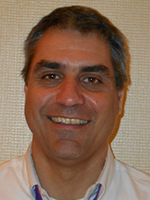
22 Overlook Drive Woolwich, NJ 08085
Ph: 866-379-4022
Mobile: 609-932-8795
www.flir.com
This email address is being protected from spambots. You need JavaScript enabled to view it.
Thermal Gas Imaging
Abstract:
Since the introduction of the FLIR GasFindIR around 2006 we have seen many new applications for gas imaging using a thermal camera. This presentation will cover the history of thermal gas imaging and discuss the many applications you can us a thermal camera to detect gas leaks. We will also cover the rules and regulations regarding optical gas imaging as it pertains to volatile organic compound gas detection as well as sulfur hexafluoride gas better known as SF6.
William Lott
Director: Atlantic Leak Detection & Utility Locating
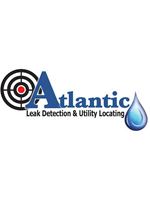
27 North Main Street Marlboro, NJ 07746
Ph: 917-597-5907
Mobile: 609-932-8795
www.AtlanticLeak.com
This email address is being protected from spambots. You need JavaScript enabled to view it.
Electronic Leak Detection
Abstract:
Electronic Leak Detection (ELD), also known as Electronic Field Vector Mapping, is a relatively new method of testing the integrity of roofing and waterproofing projects. ELD is a nondestructive test method that uses low-voltage electrical current to detect leaks within a waterproofing membrane. ELD can provide an alternative or complimentary test method to thermographic roof inspections. This introduction to ELD will include: basic principles of ELD, a description of the process, the best applications for ELD, limitations of this technology, and comparisons to existing integrity test methods.
Adrian Messer
Manager of US Operations
UE Systems, Inc.
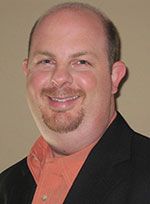
195 Clarksville Road
Princeton Junction, NJ 08550
Ph: 609-716-4162
www.mistrasgroup.com
This email address is being protected from spambots. You need JavaScript enabled to view it.
Groundwork for Creating a Successful CBM Program
Abstract:
The success of a Condition Based Maintenance (CBM) program relies on more than just having the condition monitoring tools. Instead of asking which condition monitoring technology is better, the facility should start with a thorough understanding of the failure modes associated with their most critical assets.
In addition, aligning to more of a culture of reliability as opposed to a culture of firefighting can be the biggest obstacle of all. This presentation will deliver information for the attendees to think about when starting a condition monitoring program, suggested culture change management, creating awareness of the condition monitoring program, and ways to help create program buy-in from leadership.
Arturo Nunez
Senior Manager Asset Monitoring
Mistras Group, Inc.
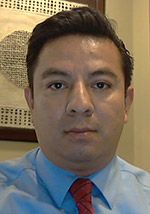
Ph: 864-224-4517
Cell: 914-282-3504
www.uesystems.com
This email address is being protected from spambots. You need JavaScript enabled to view it.
Increase Uptime and Plant Reliability by Deploying Asset Monitoring Solutions
Abstract:
Traditionally, periodic testing of assets has been the method of choice to evaluate their integrity. This approach can have some disadvantages such as erroneous measurements, unavailability of the asset for testing, or testing using different instrumentation settings or techniques. The development of instrumentation for continuous monitoring allows the inspection intervals to be reduced significantly. It also allows monitoring of the asset during the very different operating conditions it experiences. This allows us to identify the correlation between fault mechanisms such as cracks, leaks, corrosion, arcing, etcetera, and the operation of the asset. This paper presents different applications where asset monitoring is used for detecting active faults in power transformers, tube leaks in boilers, cracks on combustion turbines, and thickness measurements. Case studies where the benefits for monitoring will also be presented.
Craig Nelson, CESW, CESCP
JM Test Systems, Inc.
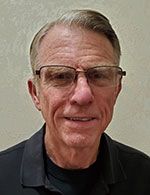
2001 Bates Drive, Suite 320
Waxahachie, TX 75167
Ph: 225-925-2029 x3122
www.jmtest.com
This email address is being protected from spambots. You need JavaScript enabled to view it.
NFPA 70E and Risk Management - The Decision-making Process for Performing Thermography Inspections
Abstract:
The 2018 edition of the NFPA 70E Standard for Electrical Safety in the Workplace emphasizes performing a risk assessment to determine if a task involving electrical maintenance and, by extension, a thermographic inspection, is an acceptable risk and if so, ensuring that the risk is minimized as much as possible.
By the same token, it is also imperative that a thorough risk assessment is performed to evaluate all recognized hazards, utilize the hierarchy of controls to minimize risk to an acceptable level, and if the risk is determined to be unacceptable, either take steps to lower that risk to an acceptable level or make the informed decision not to perform the inspection at all.
This presentation will focus on the importance of performing risk assessments to minimize electrically-related hazards in performing thermographic inspections.
Tim Rohrer, CMRP
Founder & President
Exiscan Electrical Safety Products
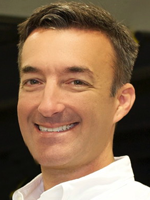
1645 Lyell Avenue
Rochester, NY 14606
Ph: 585-366-0333
www.Exiscan.com
This email address is being protected from spambots. You need JavaScript enabled to view it.
IR Inspection Windows: Considerations for Installation
Abstract:
Infrared (IR) Inspection Windows are fast becoming an industry-standard tool for conducting safe, duplicatable, and accurate IR inspections in industrial, commercial, and municipal facilities around the world. One of the most common questions thermographers and equipment owners have is “how and where are IR windows installed for best results?” This presentation will address the following topics: safety considerations, target selection, obstructions, field of view (FOV), window placement and selection, and installation mechanics.
Ricko Chrisna Kurnaedi Salam
Corrosion & Material Engineer
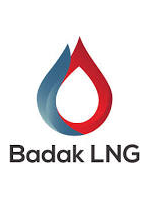
Badak LNG
Bontang 75324
East Kalimantan
Indonesia
Ph: +62548 55 1300
www.badaklng.co.id
This email address is being protected from spambots. You need JavaScript enabled to view it.
Inspection of LNG Tanks with Infrared Thermal Imaging at Badak LNG
Abstract:
Badak LNG is a natural gas liquefaction company located in Bontang, Indonesia that produces LNG & LPG as its main products. To store LNG we have six storage tanks with a total capacity of 637,000 m3. All storage tanks are interconnected with a piping system with six main LNG transfer lines for shipping LNG through two loading dock facilities.
LNG tanks at Badak LNG are of the single containment type. The tanks were designed with a double walled shell containing perlite insulation between the walls. The main issue in LNG storage tanks is the probability of embrittlement of the outer shell material, which may occur due to settlement of perlite insulation or LNG leakage. Since the temperature of LNG is approximately -160ºC and the outer shell is made from carbon steel (ASTM A516 Grade 70) which can only withstand temperatures down to -20ºC, any space created due to settlement of the perlite insulation will subject the outer shell to cryogenic fluids which can lead to embrittlement.
Due to the above condition, a critical aspect of tank maintenance is to locate anomalies in the perlite insulation. Using infrared thermography the anomalies are detected by observing the thermal patterns of the outer shell of the LNG tanks.
This paper describes the Badak LNG program to maintain LNG tanks using infrared thermal imaging. Both qualitative and quantitative methods are used to determine the condition of the tanks. Based on the risk analysis, follow-up action is scheduled and prioritized to ensure the tank is safe for further service.
Carl Schultz
Regional Sales Manager
ALL-TEST Pro, LLC

12318 Goldenrod Ave.
Bradenton, FL 34212
Ph: 203.733.3333
www.alltestpro.com
This email address is being protected from spambots. You need JavaScript enabled to view it.
Motor Circuit Analysis (MCA™): Welcome to the 21st Century!
Abstract:
Would you go to a doctor that only used a stethoscope and thermometer as diagnostic tools? Of course not! So why do we continue to use a “megger” and Volt/Ohm meter to “diagnose” motor issues?
In “Motor Circuit Analysis (MCA™): Welcome to the 21st Century!” We will discuss traditional “motor testing” methods and how little they’ve changed in the past 100 years – and how completely ineffective they are. Like a doctor who can perform a blood test, x-rays and use all the modern technologies available to the medical community, “Motor Circuit Analysis (MCA™)” provides a complete picture of your motor’s health and can diagnose even the most unlikely of problems. We’ll provide a detailed explanation of “Motor Circuit Analysis (MCA™)” and demonstrate this remarkably fast and effective method for diagnosing current and future motor failures. Used for troubleshooting and predictive maintenance on installed and un-installed motors – “Motor Circuit Analysis (MCA™)” is the fastest and most accurate method for determining the electrical health of a motor and motor system.
This presentation of “Motor Circuit Analysis (MCA™): Welcome to the 21st Century!” will show you how to simplify your life and eliminate headaches caused by unexpected and unplanned motor failures.
Gregory R. Stockton
President, Stockton Infrared
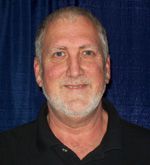
8472 Adams Farm Road
Randleman, NC 27317
Ph: 800-248-SCAN (7226)
www.StocktonInfrared.com
This email address is being protected from spambots. You need JavaScript enabled to view it.
Getting the Big [Thermal] Picture
Abstract:
The farther one can get from the subject of any thermal imaging survey while maintaining enough spatial resolution to achieve the needed image quality, the more efficient the data collection process becomes and the more useful the imagery becomes. This is the aerial infrared advantage.
Thermal imagery (IR) from aerial infrared thermal surveys of buildings, complexes, campuses, military bases and cities can be used for many purposes. Systems like supply steam and condensate return lines, hot water lines, chilled water lines, supply water mains, distribution piping, storm water drains and sewer lines can be monitored by looking at surface temperatures and importantly, patterns of heat on the surfaces. Heating and cooling distribution systems can be flown rapidly and inexpensively to provide thermal data for asset management planning, condition-based monitoring and predictive maintenance (PdM) activities. As a result of finding and documenting the condition of various systems, energy usage can be reduced, infrastructure can be saved and informed decisions can be made, with all the related asset management benefits. The main categories of objects that are typically surveyed from the air and that are discussed in this paper are: flat and low-sloped roofs, heating and cooling systems, solar fields and waterways.
Greg Stodd
Infralogix
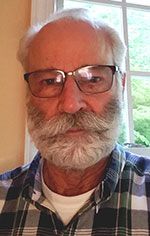
1315 Jamestown Road, Suite 201
Williamsburg, VA 23185
Ph: 757-592-1216
www.infralogix.com
This email address is being protected from spambots. You need JavaScript enabled to view it.
Thermal Tuning as a Diagnostic Tool
Abstract:
Accurate analysis of thermal images can be a daunting task for new thermographers. This is particularly true when performing electrical inspections.
With the wide range of temperatures associated with energized components, it is essential for the thermographer to make accurate field decisions concerning the acceptable operating conditions of electrical equipment.
Utilizing the infrared camera’s settings and adjustments, this presentation will demonstrate various methods for analyzing thermal images through documented examples and recommended corrective actions.
Nagy Wassef
Heater Integrity Optimization Engineer
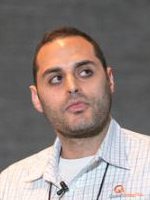
Quest Integrity
10750 Cash Road
Stafford, TX 77477
Ph: 832-500-1031
www.QuestIntegrity.com
This email address is being protected from spambots. You need JavaScript enabled to view it.
Quantifying Infrared Temperature Corrections from Art to Science
Abstract:
Infrared (IR) thermometry has been used for forty years to monitor tube metal temperatures in refining and chemical furnaces. The application of IR thermometry has often been characterized as highly operator dependent and therefore developed a very poor reputation in the industry from poorly applied and interpreted results. There is no question that when absolute accuracy is unimportant, IR thermometry has proven to be an excellent diagnostic tool for detecting tube hot spots from internal fouling and heat distribution non-uniformity in fired heaters. However, to capture the full capability of IR thermometry, a proven methodology is required to measure accurate temperatures in a repeatable process. This presentation will discuss common instrument and environmental errors and corrective practices during infrared tube temperature monitoring for refinery fired heaters.
Tony Yin
General Manager, FOTRIC Precision Instruments
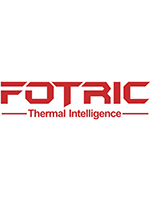
2021 Nottingham Place
Allen, TX 75013
Ph: 214-235-4544
www.fotric.com
This email address is being protected from spambots. You need JavaScript enabled to view it.
Data-Driven Thermal Imaging Management
Abstract:
Fotric PdmIR is developed for inspectors to intelligently manage the accumulated quantity of thermal images, historical data, and complex diagnosis criteria. This new system can help to effectively manage, organize, locate and analyze thermal images and generate high-quality data statistics and reports to evaluate and trend the status of assets.
This presentation will introduce an innovative data-driven intelligent PdmIR system and its solutions to diagnostic challenges and how it can help professionals to do the inspection job intelligently, save significant time when creating reports, bring more value to the customer, generate more business, and improve the efficiency of facility condition monitoring.
Austin P. Tucker
AVP, PI Risk Services, Global Risk Solutions
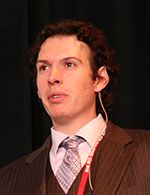
QBE North America
Parker, CO
Ph: 469-233-9606
www.qbena.com
This email address is being protected from spambots. You need JavaScript enabled to view it.
The Understanding of Visual Light through History, Science, and Culture
Abstract:
Color is a fascinating subject when we take the time to think about it and what it means to our culture and our achievements. Since the discovery of the color spectrum by Isaac Newton in 1671, we have gained more knowledge about both the visible world and the invisible by what can be seen and felt.
As humans have gained more knowledge on our own visual spectrum – and limitations – we have also begun to learn that other creatures on Earth see differently. This paper will explore a brief history of how humans see and understand color by examining the historical record. I will also look at how other fauna see color, including the lack of color and visuals outside the human spectrum with focus on near-infrared and infrared spectrums.
Lastly, I will look at the ongoing experiments being done on humans to increase our visual spectrum range and its possible applications.
Who Should Attend
- Thermographers
- Process Control Supervisors
- Maintenance Managers
- Loss Control Specialists
- Reliability Engineers
- P/PM and NDT Personnel
- Manufacturers
- Quality Assurance Inspectors
- Home and Building Inspectors
How You Will Benefit
- Education
- Learn New Technology
- Networking
- See Latest Developments
- Share Ideas
- Discover New Applications & Techniques
Professional Curriculum
Infraspection Institute instructors use extraordinary techniques to deliver stimulating, effective, and relevant instruction. All of our instructors are highly experienced, practicing thermographers. Each brings years of unmatched, real-world experience to the classroom. Our courses are taught using a combination of dynamic multi-media presentations, hands-on demonstrations and one-on-one interaction with students. Our courses integrate theory, practice, and case studies in a fun, relaxed atmosphere designed to maximize your learning experience.

